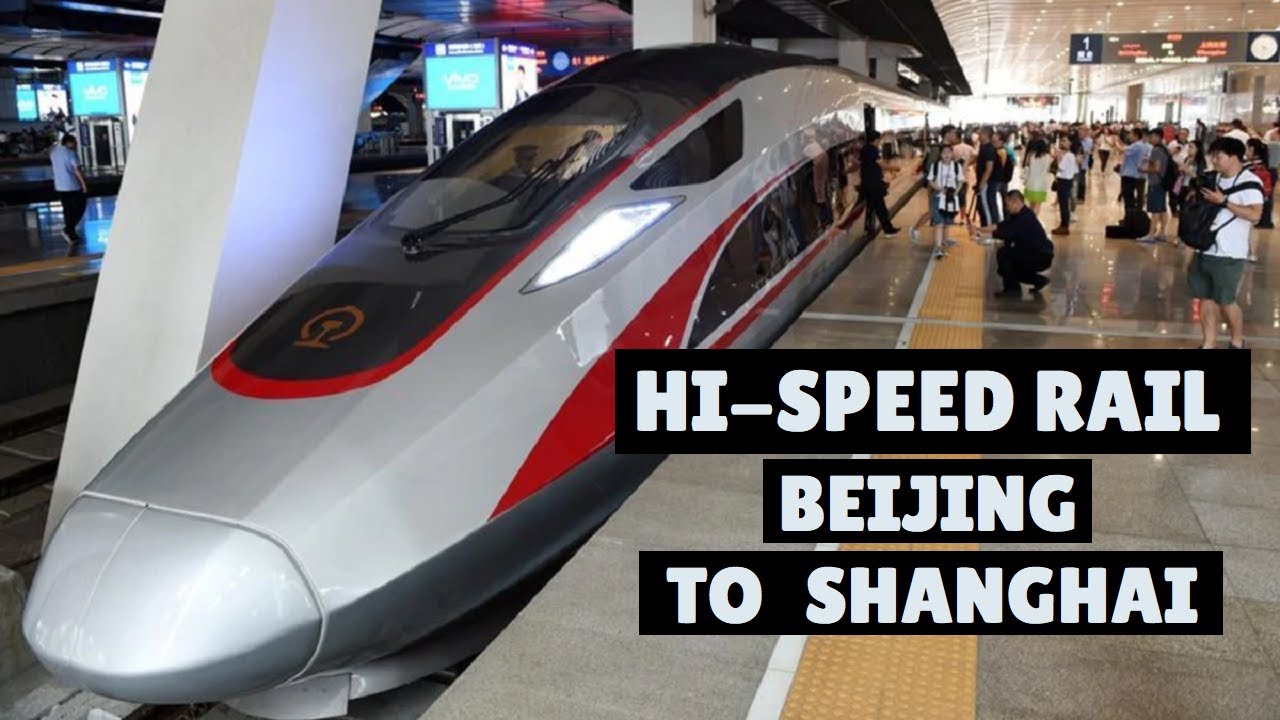
Beijing to Shanghai High Speed Train: Your Complete Guide
Travel from Beijing to Shanghai in style and comfort with a high-speed train. This comprehensive guide provides everything you need to know about the journey, tickets, schedules, and more.
1. Introduction: The Magic of High-Speed Rail in China
China's high-speed rail network is an engineering marvel, connecting major cities across the vast country with unparalleled speed and efficiency. The Beijing to Shanghai high-speed line is a testament to this achievement, whisking passengers between the two metropolises in a matter of hours. This journey is not just about speed; it's about embracing the convenience, comfort, and scenic beauty that modern Chinese rail travel offers.
2. Choosing Your Train: G, D, or Overnight Sleeper?
Navigating the world of Chinese train categories can seem daunting, but it's simpler than you might think. Here's a breakdown of the options for your Beijing to Shanghai adventure:
| Train Type | Speed | Travel Time | Price Range (USD) | Comfort Level |
|---|---|---|---|---|
| G-series (High-Speed) | 300-350 km/h | 4.5-5.5 hours | $90 - $180 (Second Class) $140 - $280 (First Class) |
Highly comfortable, spacious seats, power outlets |
| D-series (Bullet Train) | 200-250 km/h | 5-6 hours | $70 - $140 (Second Class) $110 - $220 (First Class) |
Comfortable seats, some power outlets |
| Overnight Sleeper (Z, T, K series) | 100-160 km/h | 12-14 hours | $50 - $100 (Hard Sleeper) $80 - $160 (Soft Sleeper) |
Basic comfort, bunk beds, scenic experience |
Recommendations:
- For speed and efficiency: Opt for a G-series train.
- For a balance of speed and affordability: Choose a D-series train.
- For a budget-friendly, scenic experience: Consider an overnight sleeper.
3. Booking Your Tickets: A Step-by-Step Guide
Securing your high-speed train tickets is easy, thanks to multiple online platforms and offline options:
Online Options:
- Trip.com: https://www.trip.com/ (English interface, international credit cards accepted)
- 12306.cn: https://www.12306.cn/index/ (Official China Railway website, requires Chinese ID or passport verification)
Offline Options:
- Train station ticket windows (passport required)
- Authorized ticket agencies
Passport Requirements: Your passport is essential for purchasing tickets and boarding the train. Ensure it's valid for at least six months from your travel date.
Peak Season Tips: During holidays and peak travel seasons, it's advisable to book tickets well in advance (up to 30 days prior) to secure your desired train and class.
4. Deciphering Your Ticket: Understanding the Details
Your Chinese train ticket, while seemingly cryptic, holds valuable information:
- Train Number: Identifies your specific train (e.g., G101).
- Date and Time: Clearly states your departure date and time.
- Carriage and Seat: Locates your assigned carriage (车厢) and seat number (座位).
- Class: Indicates your seating class (Second Class, First Class, etc.).
Boarding Procedures: Arrive at the station at least 30 minutes before departure. Proceed through security checks and locate your designated waiting area using your ticket information.
5. Navigating Beijing and Shanghai Stations
Both Beijing and Shanghai boast modern, well-connected train stations:
Beijing South Railway Station (北京南站):
- Metro: Line 4 and Line 14 serve the station.
- Taxi: Easily accessible, but be prepared for potential traffic.
Shanghai Hongqiao Railway Station (上海虹桥站):
- Metro: Line 2, Line 10, and Line 17 connect to the station.
- Maglev: Offers a high-speed connection to Shanghai Pudong International Airport (PVG).
6. On Board Experience: What to Expect
High-speed trains in China offer a comfortable and enjoyable journey:
Seating: Expect spacious seats with ample legroom, especially in First Class. Power outlets are readily available for charging devices.
Amenities: Most high-speed trains offer complimentary Wi-Fi, though speeds can vary. Food and beverages are available for purchase from onboard attendants or vending machines.
7. Exploring Beyond the Train: Day Trip Options
Consider a stopover to explore the cultural gems along the route:
- Nanjing: Visit the majestic Purple Mountain, the serene Xuanwu Lake, and the historical Ming Xiaoling Mausoleum.
- Suzhou: Explore the enchanting Classical Gardens of Suzhou, take a boat ride on the ancient Grand Canal, and savor local delicacies.
- Hangzhou: Immerse yourself in the beauty of West Lake, hike to scenic tea plantations, and discover the charm of Lingyin Temple.
8. Essential Tips for a Smooth Journey
Maximize your comfort and minimize stress with these practical tips:
- Pack Light: Carry-on luggage is convenient.
- Arrive Early: Allocate ample time for security and finding your platform.
- Learn Basic Phrases: Knowing a few Mandarin phrases can be helpful.
9. Conclusion: Embark on Your High-Speed Adventure
The Beijing to Shanghai high-speed train journey is more than just transportation—it's an experience that combines efficiency, comfort, and glimpses of China's dynamic landscape. Whether you prioritize speed, affordability, or a touch of scenic wonder, the choice is yours. Book your tickets, pack your bags, and embark on an unforgettable high-speed adventure.
FAQs about the Beijing to Shanghai High-Speed Train
1. Can I buy tickets at the station before departure?
Yes, but it's risky, especially during peak season. Tickets sell out fast, so booking online in advance is recommended.
2. Is there food available on the train?
Yes, you can purchase food and drinks from attendants pushing carts or from vending machines. Options usually include instant noodles, snacks, and beverages. You can also bring your own food.
3. What happens if I miss my train?
Policies vary depending on ticket type. Contact station staff immediately. You might be able to change to a later train by paying a fee, but there's no guarantee.
More article references: beijing to suzhou bullet train